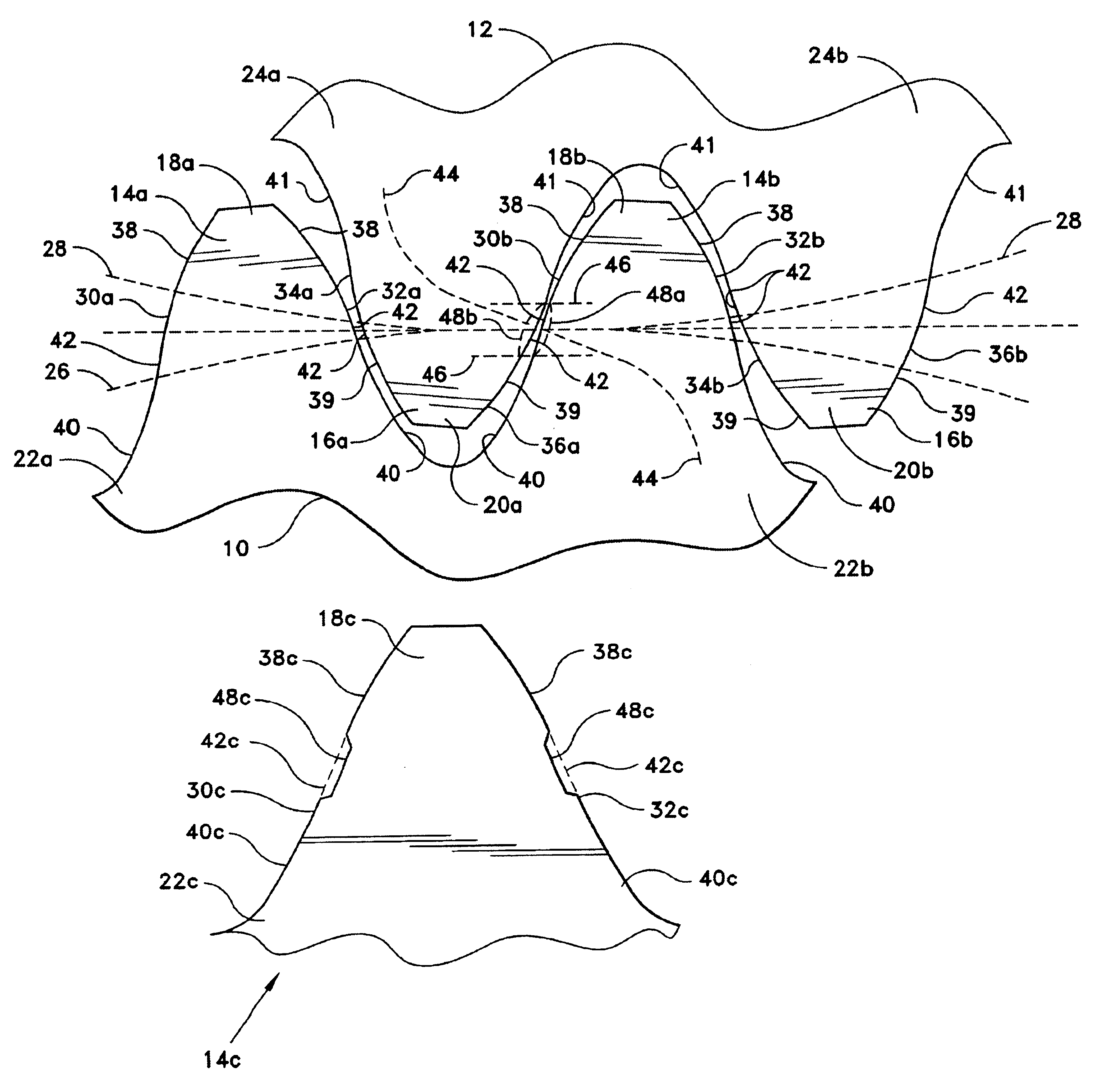Non-involute gears with conformal contact
a conformal contact, non-volute technology, applied in the direction of gearing elements, belts/chains/gears, hoisting equipments, etc., can solve the problems of low efficiency or durability of relative crude power transmission systems, inability to make good use of these advantages, and low cycloid profile. achieve the effect of removing high contact pressure peaks
- Summary
- Abstract
- Description
- Claims
- Application Information
AI Technical Summary
Benefits of technology
Problems solved by technology
Method used
Image
Examples
Embodiment Construction
The present invention comprises various embodiments of gear tooth profiles, shapes, or patterns each including means for greatly reducing or eliminating extremely high contact pressures between mutually convex surfaces of mating gear teeth. This is achieved by forming a relief or depression in the face of at least one of the two mating teeth, thereby precluding contact between the two teeth at that location. While the present invention is directed primarily to use with non-involute (e. g., cycloid) gear tooth profiles, it will be seen that it may be adapted to virtually any form of gear profile in which an area of non-conformal contact (i. e., where the tooth profiles result in a line of contact across the teeth, rather than an area of mutually congruent contact) would otherwise occur.
FIG. 1 illustrates the principle of the present invention as applied to the gear teeth of two meshed gears 10 and 12. While FIG. 1 illustrates only a portion of each of the two gears 10 and 12, it will...
PUM
 Login to View More
Login to View More Abstract
Description
Claims
Application Information
 Login to View More
Login to View More - R&D
- Intellectual Property
- Life Sciences
- Materials
- Tech Scout
- Unparalleled Data Quality
- Higher Quality Content
- 60% Fewer Hallucinations
Browse by: Latest US Patents, China's latest patents, Technical Efficacy Thesaurus, Application Domain, Technology Topic, Popular Technical Reports.
© 2025 PatSnap. All rights reserved.Legal|Privacy policy|Modern Slavery Act Transparency Statement|Sitemap|About US| Contact US: help@patsnap.com



